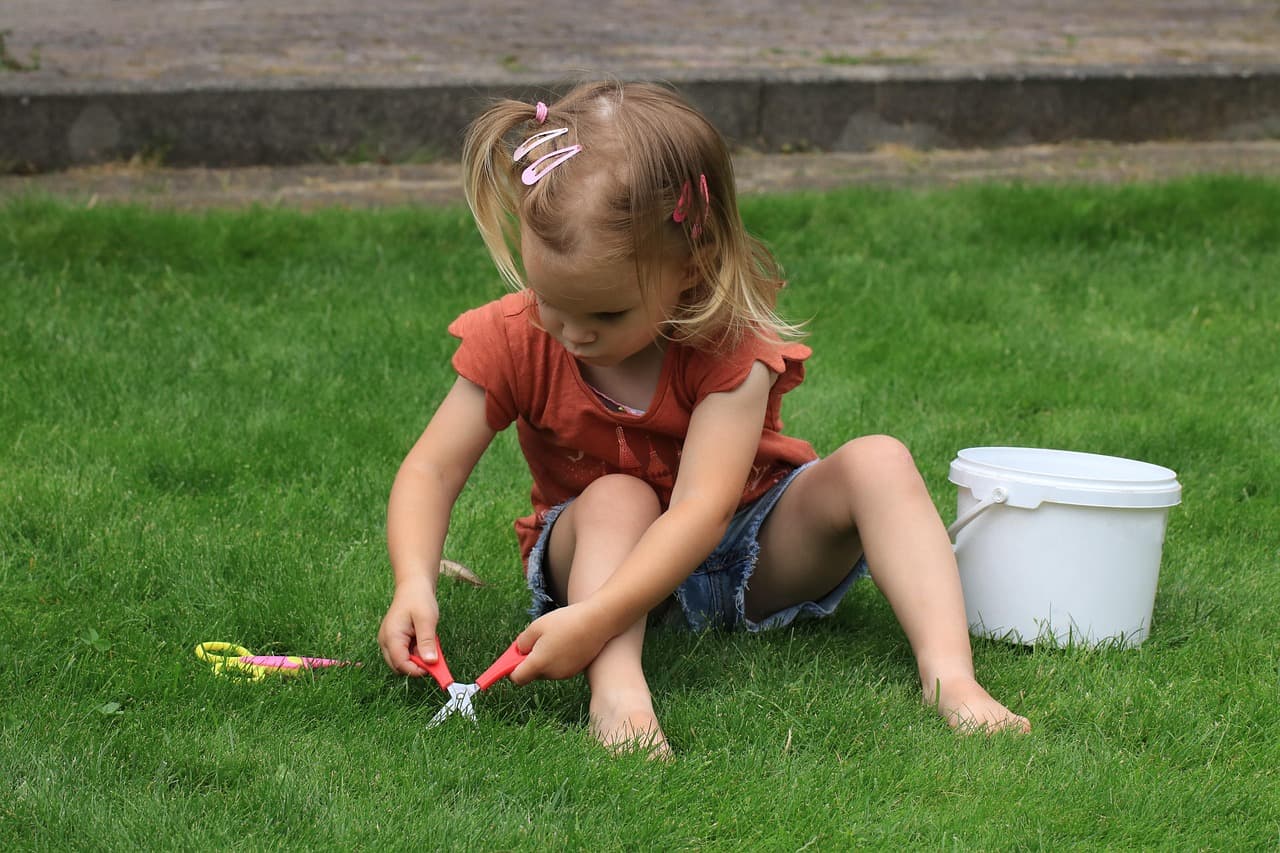

How to make your garden toddler-safe
Your garden should be a place where toddlers can explore, learn, and play without constant danger lurking underfoot. However, gardens are full of potential risks, including water, sharp tools, loose surfaces, poisonous plants, and slippery paths.
In this guide, we’ll show you how to make a garden toddler safe, with a simple checklist, zone-by-zone advice, and practical fixes.
A Quick Checklist
-
Always supervise your child
-
Stabilise loose paths and patios
-
Secure ponds, paddling pools and sources of water
-
Check fences and gates
-
Lock away chemicals and tools
-
Provide shade
-
Choose safe, non-toxic plants
-
Keep sandpits secure and covered
Prevent slips, trips and falls
Garden surfaces are one of the biggest hazards for toddlers. Wet decking and mud can be slippery, while uneven paving and loose gravel create easy trip points. For little ones who crawl, scoot, or ride on toys, even small stones can become dangerous obstacles and potential choking hazards if picked up.
Stabilising loose surfaces with a product like Pebble Glue binds gravel, pebbles or mulch into a firm but permeable layer. This not only reduces slips and trips but also prevents scatter, keeps surfaces buggy-friendly, and reduces the need for sweeping and raking. You keep the natural look, but gain a garden that’s safer, easier to maintain, and more accessible for everyone.
Ensure proper safety around water sources
Water is the most serious hazard in a family garden. Toddlers can drown in just a few centimetres, which means even shallow puddles, buckets, or paddling pools carry real risk. To reduce danger, ponds, hot tubs, and pools should always be fenced off and fitted with child-safe covers or rigid grilles.
Paddling pools are a particular concern. These should be emptied immediately after play and should never be used without constant adult supervision. It’s easy to underestimate the risk, but accidents can happen quickly, even in very shallow water.
Another often-overlooked hazard is water butts and garden containers. These can be just as dangerous as open ponds, so make sure they are fitted with secure, tight-fitting lids at all times.
A simple rule of thumb applies: if you wouldn’t leave your child alone with it indoors, don’t leave them near it outdoors.
Choosing safe plants and mulch
Toddlers are naturally curious, which means they often touch, grab, and even taste whatever they find in the garden. Choosing the right plants and ground cover is essential to keep them safe. Favour child-friendly options such as strawberries, blueberries, mint, lavender, sunflowers, or lamb’s ears — all of which add colour and interest without posing unnecessary risks.
At the same time, it’s important to avoid species that could cause harm. Common garden plants such as foxglove, daffodil bulbs, yew, laburnum, and even roses with their sharp thorns can be dangerous if ingested or handled. Always keep plant labels so you can quickly check the safety of your child if they happen to put something in their mouth.
Mulch also deserves careful thought. Bark or stabilised gravel can create safe, practical surfaces for play areas, but loose stones or pebbles can pose a choking hazard. Mushrooms and fungi should be removed as soon as they appear, as many can be poisonous to small children.
Protect your child with shelter and shade
Toddlers are far more vulnerable to heat and sunburn than adults, so protecting them from direct sunlight is a key part of garden safety. Creating reliable shade is the first step - sails, pergolas, or securely fixed parasols work well. At the same time, trees and tall shrubs can provide natural cover that grows with your garden. It’s also wise to limit outdoor play during the hottest part of the day, typically between 11 am and 3 pm, when the sun is at its strongest. Even in shaded areas, pairing cover with hats, lightweight clothing, and sunscreen ensures your child can enjoy the garden safely throughout the summer months.
Making a garden safe for toddlers does not mean stripping away its character or fun. With a few thoughtful changes, from securing water and choosing safe plants to providing shade and stabilising loose surfaces, you can create an outdoor space that is both safe and stimulating.
If your garden paths, patios, or play areas use gravel, pebbles, or mulch, stabilising them with a product like Pebble Glue is a simple step that reduces slips, trips and scatter while keeping the natural look you love. The result is a family-friendly garden where toddlers can explore with confidence and you can relax knowing they are safe.
